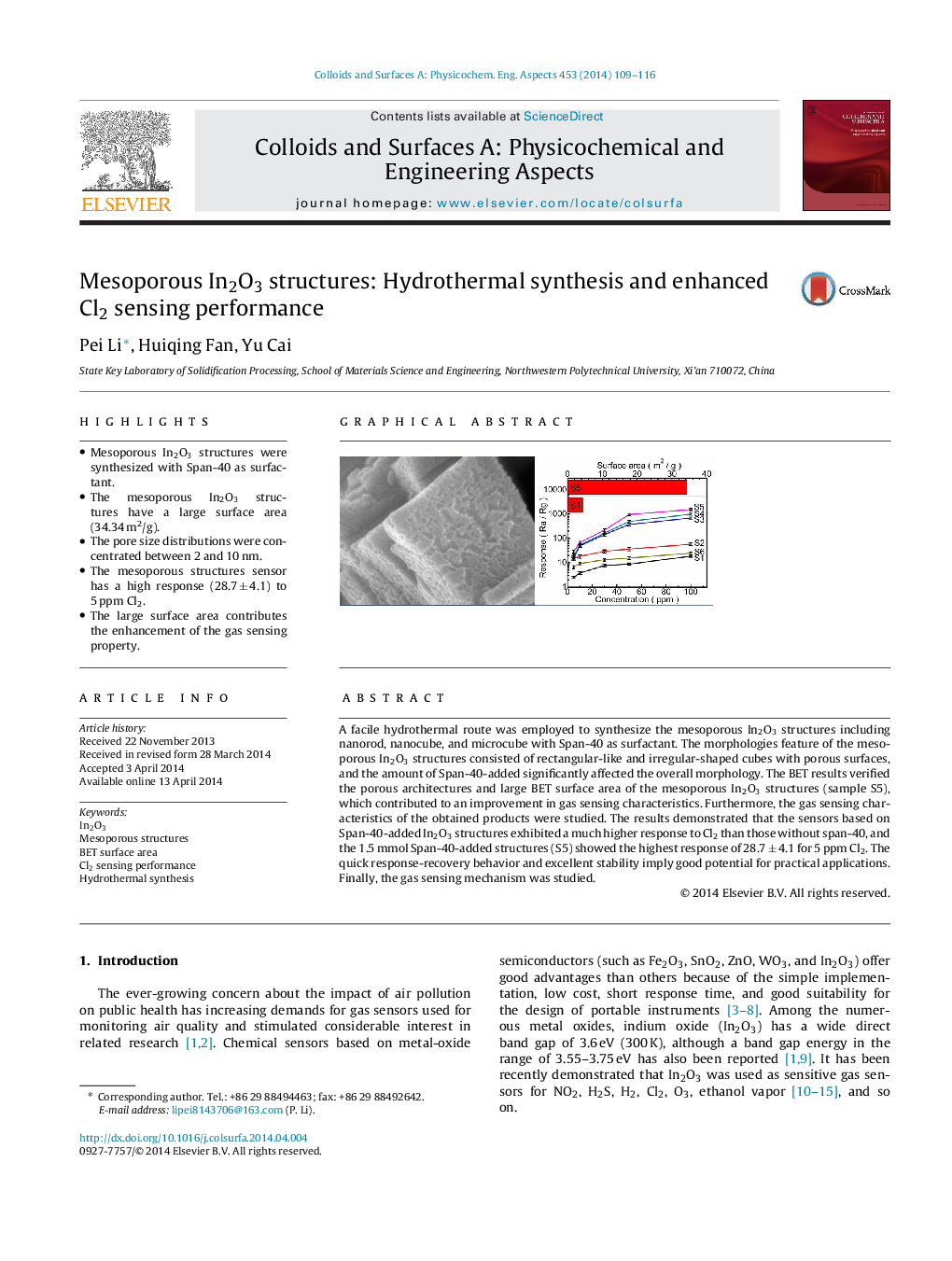| Article ID | Journal | Published Year | Pages | File Type |
|---|---|---|---|---|
| 592715 | Colloids and Surfaces A: Physicochemical and Engineering Aspects | 2014 | 8 Pages |
•Mesoporous In2O3 structures were synthesized with Span-40 as surfactant.•The mesoporous In2O3 structures have a large surface area (34.34 m2/g).•The pore size distributions were concentrated between 2 and 10 nm.•The mesoporous structures sensor has a high response (28.7 ± 4.1) to 5 ppm Cl2.•The large surface area contributes the enhancement of the gas sensing property.
A facile hydrothermal route was employed to synthesize the mesoporous In2O3 structures including nanorod, nanocube, and microcube with Span-40 as surfactant. The morphologies feature of the mesoporous In2O3 structures consisted of rectangular-like and irregular-shaped cubes with porous surfaces, and the amount of Span-40-added significantly affected the overall morphology. The BET results verified the porous architectures and large BET surface area of the mesoporous In2O3 structures (sample S5), which contributed to an improvement in gas sensing characteristics. Furthermore, the gas sensing characteristics of the obtained products were studied. The results demonstrated that the sensors based on Span-40-added In2O3 structures exhibited a much higher response to Cl2 than those without span-40, and the 1.5 mmol Span-40-added structures (S5) showed the highest response of 28.7 ± 4.1 for 5 ppm Cl2. The quick response-recovery behavior and excellent stability imply good potential for practical applications. Finally, the gas sensing mechanism was studied.
Graphical abstractFigure optionsDownload full-size imageDownload as PowerPoint slide
